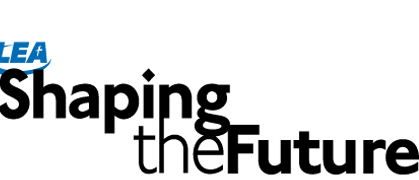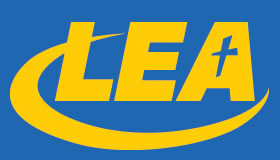
 One to One: BYOT!
One to One: BYOT!
In 2011, Our Redeemer Lutheran School, Wauwatosa, Wisconsin, committed to the idea of becoming a 1:1 school at the middle school level. However, in the economic times in which we live, this proved to be a daunting task. While our extremely active PTL has worked tirelessly to raise money to fund technology at Our Redeemer, purchasing computers for each student has not been financially feasible. How, then, could we reach our goal of leveraging technology in education so that each of our students can become 21st century learners? The answer for Our Redeemer has been found in BYOT – Bring Your Own Technology.
This transition, while well thought out, has not been without its hiccups. Here are a few thoughts on how to effectively implement a BYOT strategy in a Lutheran Schools setting:
Infrastructure, Infrastructure, Infrastructure
Make sure your infrastructure will support your use. Nothing will turn everyone off (pun intended) like not having access when needed.
The first foray into putting mobile computers into the hands of our students began in 2005 with the purchase of a mobile laptop lab and 12 laptop computers. A wireless router was a part of the mobile lab and was plugged into the school’s network in each classroom. A printer completed the mobile lab setup.
While this setup put technology into the hands of our students more often, it certainly was not without its pitfalls. First of all, students would often not plug in the computers when they returned them to their assigned slots. Secondly, teachers often forgot to plug in the mobile lab when it was returned to its home. As technology continued to evolve, and web content became increasingly complex, we found that our wireless router was not robust enough to handle the increased traffic. This led to students being “kicked off” the wireless network – a major frustration. Finally, the mobile lab was often unavailable when it was desired, and, with classes of 20-25 students, 12 computers was not enough to meet the need.
We found we had to regroup, rewire, and place new, commercial grade wireless access points in strategic places throughout our campus. We signed a contract with a new Internet Service Provider which allows for increased traffic on the network, over-engineering to the point that we believe we could have every single student in the building working on the internet at one time without noticeable slow-downs in performance. Only then did we feel comfortable in introducing a pilot program which would allow our students to bring their own technology.
 Communicate
Communicate
All your constituents – students, parents, and teachers – need to be brought on board for such a program to be successful.
“Common Sense Education” was instrumental as we designed the BYOT program at Our Redeemer. Their three-step process – “Envision, Communicate, Implement” – served as a roadmap as BYOT was rolled out to our stakeholders.
As teachers go through the visioning process, encourage them to “think big, but be flexible.”Bringing teachers on board was instrumental in getting buy-in for the program. A word of warning, however: As teachers go through the visioning process, encourage them to “think big, but be flexible.” So often, teachers get caught up in perfecting an idea or thinking that they need to be able to answer every question about anything they might use in their classroom, that they limit themselves on what they might be willing to try. Also, whatever ideas one might have currently will change through time. All have experienced the explosion in technology: what I did yesterday is often obsolete today!
At Our Redeemer, a key component to the relative success of the roll-out of the BYOT program was that we started small. In our first year, 8th grade students were encouraged to bring whatever technology they owned for a small pilot project in American History. Everything from iPods to high end laptops showed up. The pilot program helped us identify what devices worked well for students, minor tweaks that needed to be made with our wireless network, and even some ideas for future use. One thing that became immediately clear was that we desired a relatively large screen (so teachers could more easily keep track of what was going on) and a full keyboard. This led us to purchase a Chromebook for each of our teachers to test the functionality of that device without a huge cash outlay. The second year served as a transition year, in which students were encouraged to have a device which met basic functionality standards before full implementation was achieved in year three.
Embrace the idea that students may know more than teachers
While teachers have always learned from their students, never has this been more true than in the area of today’s technology.Gone are the days when the teacher can always be the “Sage on the Stage.” While teachers have always learned from their students, never has this been more true than in the area of today’s technology. While it can be somewhat uncomfortable for a teacher to have to ask a student, “How do I do this?” it can actually prove to be empowering, both for the student and the teacher. Open ended assignments, where students can choose to present using whatever media they wish to use, often lead to discoveries that can enhance the classroom for everyone.
Don’t throw out the baby with the bathwater
Sometimes the old ways are the best.
Technology is an awesome tool, but it is just one arrow in the quiver. Teachers should not be made to feel that they need to discard everything they have done in order to embrace the future. At Our Redeemer, we have sought to make it clear that technology is best used to enhance learning, rather than to become the driving force. Sometimes it is OK, and even desirable, to “unplug.”
With the right blend of thought, foresight, and flexibility, technology in the hands of every student can transform teaching and learning, removing the walls of the classroom and expanding the horizons of our students.
Jim Van Dellen is assistant principal and teaches seventh and eighth grade history and science at Our Redeemer Lutheran School, Wauwatosa, Wisconsin.
Photos © iStock/monkeybusinessimages








